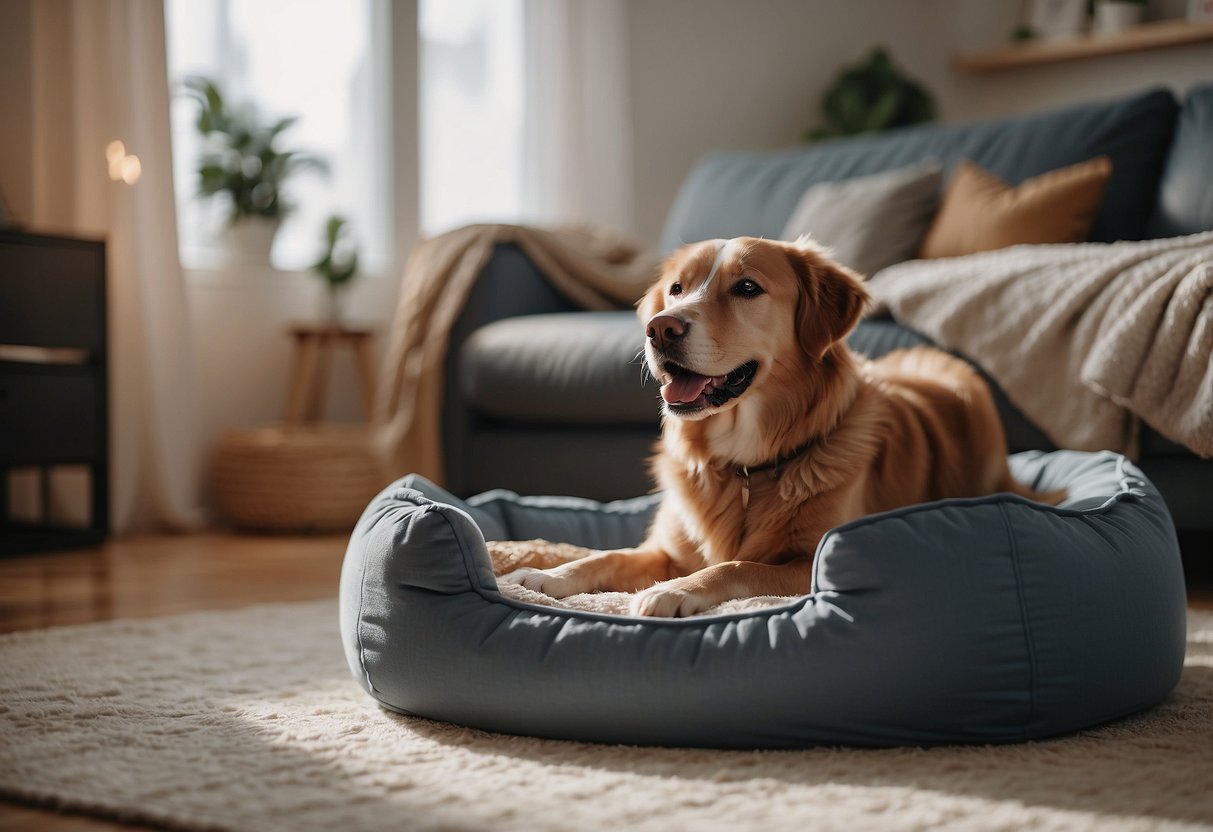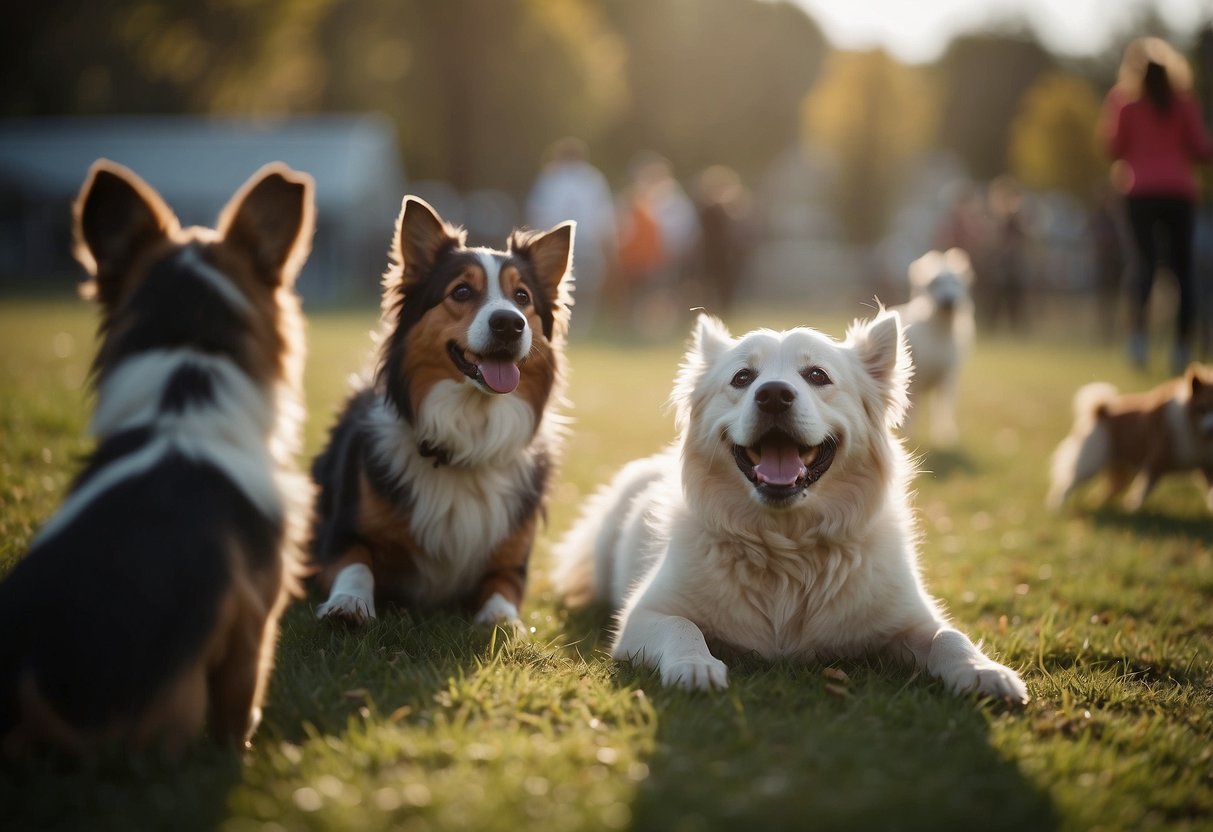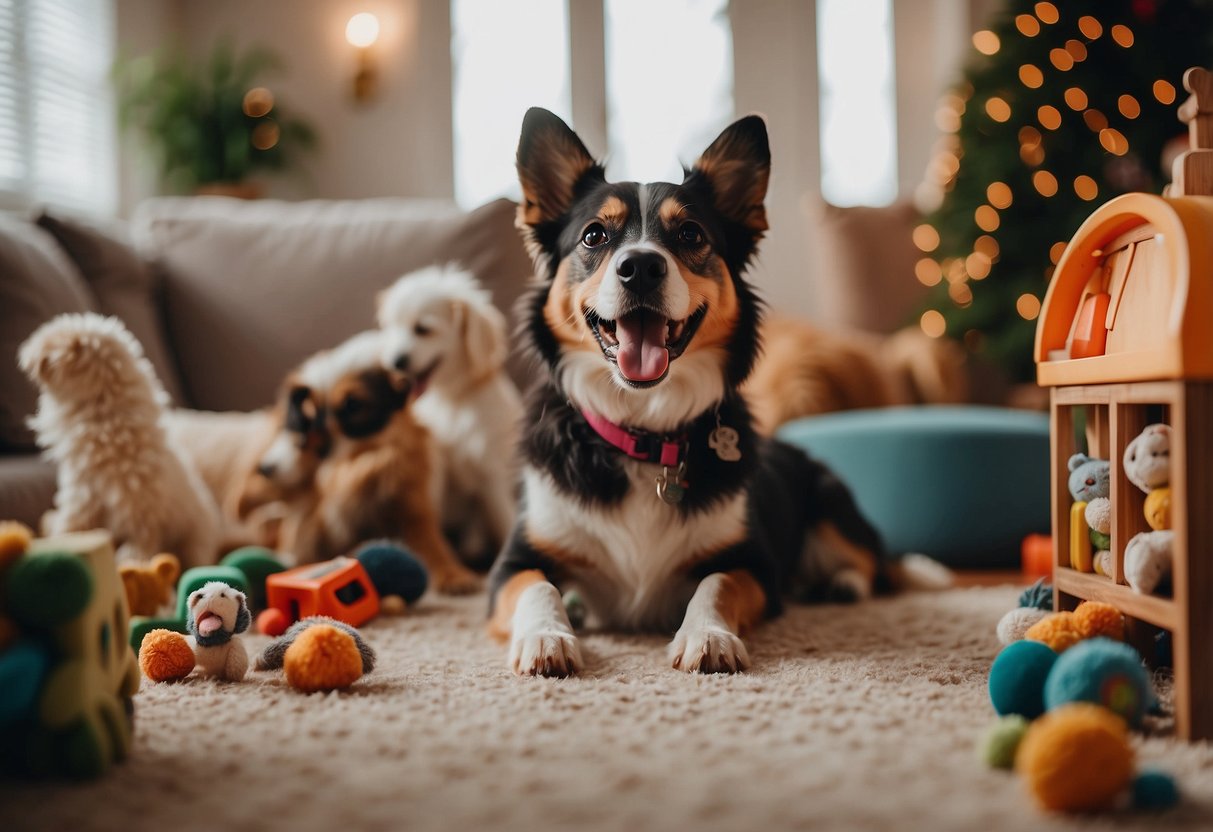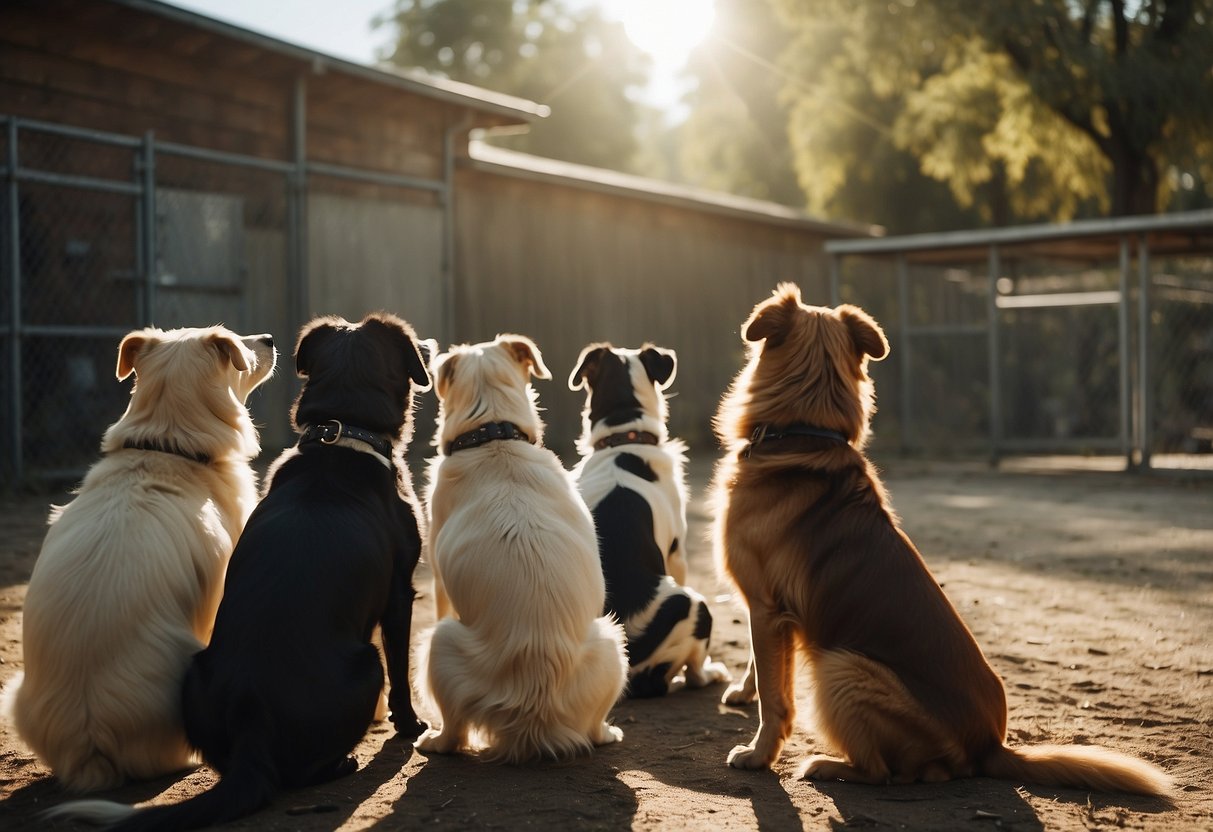Fostering dogs plays a crucial role in the dog adoption process. It not only helps potential adopters but also provides a critical service to shelters. When you foster a dog, you offer them a comfortable home environment. This environment is less stressful than a shelter, allowing the dog’s true personality to shine. This is invaluable for matching them with a suitable forever home.

Fostering also acts as a buffer, giving dogs the time they need to become ready for adoption. While they are with you, dogs can learn important socialization and training skills. This preparation helps ensure a smooth transition to their permanent home. Plus, fostering opens up space in the shelters for other dogs in need. It’s a form of community service that directly impacts the lives of these dogs and the functioning of local shelters.
Key Takeaways
- Fostering provides a less stressful environment for dogs awaiting adoption.
- Foster homes play a key role in training dogs for their future permanent homes.
- Fostering has a positive impact on local shelter capacity and community well-being.
Role of Foster Homes in Dog Adoption

Foster homes play a crucial role in the dog adoption process. They provide temporary care, helping a dog become more adoptable. Let’s dive into how they impact this journey.
Importance in the Adoption Process
Foster homes are the bridge between shelters and forever homes for many dogs. You create a positive, real-world environment for foster dogs. In a home, these dogs learn to trust and show their true personality. Something difficult in a shelter setting. This adjustment makes them more adoptable. Space also opens up at the shelter for new rescues. It’s a cycle that keeps on giving.
Types of Dogs Benefited by Foster Care
Some dogs benefit from foster care more than others. Puppies, for example, often need a safe place to grow before they’re ready for adoption. These little ones need extra care that’s hard to give in a shelter. Older dogs or those with health issues also benefit. They recover and gain strength in the comfort of a home. Dogs with behavioral issues learn how to behave in a family setting. Foster homes tailor care to what each dog needs most.
Challenges and Rewards for Fosters
As a foster, you might face challenges. It’s tough when dogs have behavioral issues or health problems. It takes patience. Yet, fostering is rewarding. You’ll see shy dogs become playful companions. Sick dogs heal and thrive. You directly help a shelter dog find its place in a forever home. It’s about making a real difference, one dog at a time. And if you’re testing the waters of dog parenthood, it’s a great first step.
Foster Care as a Buffer to Permanent Adoption

Foster care plays a crucial role in the transition from a shelter to a forever home for a homeless dog. It prepares dogs for future homes, assesses behavior, and handles individual needs, including medical care.
Preparing Dogs for Future Homes
When you foster a dog, you provide it with a critical stepping stone to adoption. In your home, the dog learns about the rhythms of daily life. These include basic training like house rules and socialization. Your support helps the dog become a good fit for a new family. It also reduces the time a dog spends in a shelter.
Assessing Behavior in a Home Environment
You can see how a dog behaves outside of a shelter. You’ll notice things that staff can’t in a kennel. For instance, you’ll see its temperament and how it interacts with people or other pets. That’s valuable. Adoption agencies use your observations. This helps match the dog with the right home. Behavior checks rank high in ensuring a successful adoption.
Handling Special Needs and Medical Care
Fosters often care for dogs with extra health or behavioral needs. You might give them medicine or take them to vet appointments. Some dogs require rehabilitation or training. With your care, they can recover and show their true, loving nature. This is a powerful factor in finding them permanent homes. Your attention to a dog’s health and well-being can transform its future.
Training and Socialization

Fosters play a vital role in preparing dogs for their forever homes through targeted training and exposure to social environments.
The Role of Fosters in Behavioral Training
You’re not just housing a dog temporarily; you are a crucial part of their path to obedience. Behavioral training includes basic commands like sit, stay, and come. This training helps dogs learn to follow instructions and behave well both indoors and on a leash.
- Obedience Training: You’ll work on commands daily, using positive reinforcement to encourage good behavior.
- Crate Training: Introducing a crate as a safe space reduces stress and helps with house training.
- Exercise: Regular walks and playtime keep dogs fit and channel their energy productively, preventing destructive habits.
Socializing Dogs with Humans and Other Animals
It’s as much about cuddles as it is about interactions. You’ll introduce your foster dog to a variety of people, dogs, and maybe even cats, to build their social skills.
- People: Host guests or visit parks so your dog encounters different ages, shapes, and sizes of humans.
- Animals: Arrange playdates with other dogs. Gradual exposure is key to prevent overwhelming your dog.
- Toys: Use a variety of toys to engage their mind and body, fostering positive play behaviors.
Remember, your guidance helps a dog blossom into a confident, well-rounded pet ready for adoption.
Matching Dogs with Forever Homes

When you foster a dog, you’re a bridge to their forever home. You give them love and care while volunteers work behind the scenes to find a perfect match.
The Process of Matching
Matching a foster dog with a forever home is not just about love at first sight. It’s about finding the right fit. Adoption events give potential adopters a chance to meet dogs in foster care. They can see the dog’s personality outside of a shelter. Adoption applications gather info about living situations, family dynamics, and other pets. This helps ensure a good fit.
Criteria for Matching
Finding a suitable home involves a few key criteria. Here they are:
- Living Situation: Is the home suited for a dog’s size and energy level?
- Family Members: Does the dog do well with children or other pets?
- Time and Attention: Can the caretaker provide enough companionship?
These help volunteers match dogs with homes where they can thrive.
Success Stories of Foster-Based Matches
Success stories warm the heart and boost trust in the adoption process. Take Mandy, a once timid rescue who found her voice with a loving foster. Then there’s the classic “foster fail,” where a foster falls in love and adopts the dog themselves. These stories show the strength of foster-based adoptions. They prove you can find a loyal companion through this process.
Support and Resources for Foster Families

When you decide to become a foster for a dog, know that you’re not in it alone. Rescue groups support foster families with training, supplies, and additional aid to carry out their vital role.
Training Provided to Foster Families
Your journey as a foster family begins with proper training. It’s vital for both you and the dog. The rescue group usually offers this. They’ll teach you about the dog’s needs, behaviors, and the basics of pet care. Sometimes, you’ll receive hands-on training. This can happen at your home or the shelter. They might also provide online resources. These can include videos or manuals on how to care for your foster dog.
Emotional and Financial Support
Rescue groups understand fostering a dog can be as challenging as it is rewarding. They often provide emotional support through access to a community of fellow fosters. You can share experiences and advice here. Many foster programs will cover the cost of medical expenses. Some even provide the basic supplies needed to care for the dog. Supplies can include food, beds, crates, and toys. Your main role is to provide a safe and loving environment while the dog waits for a forever home.
Community Impact of Foster Care

When you foster a rescue dog, you’re doing more than caring for an animal. You’re directly affecting your community in positive ways.
Reduced Euthanasia Rates
Every dog that finds a foster home is one fewer needing space in a shelter. Shelters have limited room and resources. By fostering, you’re literally saving lives. Rescue organizations can then focus on care rather than managing overcrowding. Your action helps lower euthanasia rates. It’s a simple equation: more foster homes equal fewer dogs put down.
Public Awareness and Education
Fostering a dog raises public awareness. It starts conversations. You become a walking billboard for the humane society and rescue groups. You educate others just by taking your foster dog out for a walk or posting pictures online. You show your community what a rescue dog can be: a loving, grateful addition to any home. You inspire others to foster or adopt.
Final Thoughts

Fostering a dog is more than a generous act; it’s a journey filled with love and companionship. When you bring a dog into your home, you’re offering them a second chance at life. Indeed, it is a rewarding experience that goes both ways. Here’s why:
- Joy for you and the dog. You give love and receive it in bounds. Every moment with your companion enriches your life.
- Making a difference. Saying goodbye is hard, but knowing you were a bridge to their forever home brings comfort.
- Beyond the bark. You’re not just housing them; you’re shaping their future with every walk, cuddle, and lesson.
Remember, with every wagging tail you help on its way, you pave the path for more to follow. Embrace every moment, and when the time comes to part, take pride in the part you played in their journey. You’re not just giving them a roof. You’re giving love, life, and a friend.
